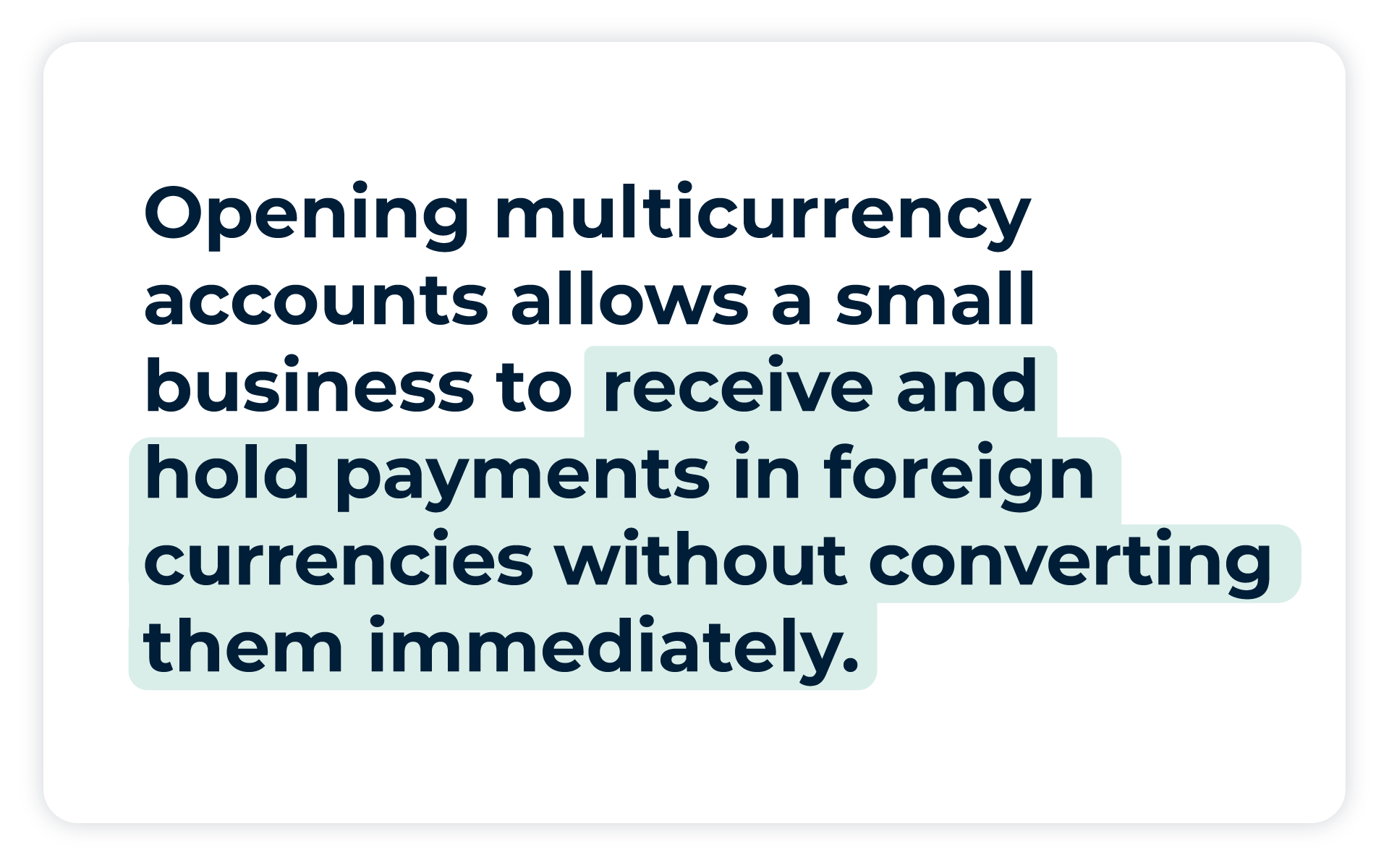Global ambition is on the rise but international expansion entails a big challenge for small businesses. Managing cross-border payments with clients and vendors, while navigating currency fluctuations, and cash flow gaps can stall growth before it even begins. Late payments inefficient transaction methods can also put a serious strain on working capital.
But managing international payments doesn’t have to be a cash flow killer. With the right tools and strategies — such as faster payment options and smart currency conversion management — small businesses can simplify global expansion without sacrificing financial stability.
5 key steps to improve cash flow when dealing with international clients and vendors
1. Use the right payment methods for speed and visibility
Many small businesses still rely on wire transfers or international checks, which are often slow, expensive, and offer little transparency. A recent study from PYMNTS found that 88% of companies see an immediate boost to their cash flow from faster payments.
Modern cross-border payment platforms offer instant and same-day payment options across many countries and currencies. These tools reduce settlement time, provide real-time payment tracking, and improve relationships with customers and vendors.

2. Optimize currency conversion to avoid hidden losses
Exchange rate volatility can chip away at cash flow. When a small business pays vendors or receives payments from clients in other currencies, every delayed conversion is a potential loss.
With competitive foreign exchange rates and transparent fees offered by payment providers, small business owners can reduce their expenses and forecast their cash flow more accurately. With improved forecasting, a company can plan for potential cash shortages.
3. Manage timing to keep cash flow fluid
Running a global small business often means longer payment cycles due to time zone differences, customs delays, and different invoicing norms. Mismatched pay-ins and pay-outs can strain liquidity.
Not every small business can manage an automated instant payment process for all cross-border payments, but even ad hoc, nonrecurring instant payments can help maintain a positive cash flow. Instant payments are now a growing share of accounts receivable for small businesses: 25% of businesses opt to receive instant payments when available, while almost 50% choose instant more than 75% of the time.
The timing can also be improved by more effective invoicing and a streamlined payments process. Digital invoicing and payment solutions that seamlessly integrate with a business accounting platform can sync cross-border receivables and payables and improve visibility into cash flow.
4. Leverage multi-currency accounts to reduce conversion costs
Opening multicurrency accounts allows a small business to receive and hold payments in foreign currencies without converting them immediately. This reduces the number of currency conversions, helping to save on fees and providing greater flexibility on exchange rates.
For example, when a business regularly receives payments in euros, holding those funds in euros instead of immediately converting them to US dollars can help when an exchange rate is unfavorable. Some advanced business-to-business (B2B) payments platforms offer multi-currency solutions that can help small businesses invoice and collect funds in local currencies while delaying conversion, when it’s necessary.

5. Centralize payment management to reduce friction
Juggling international accounts, multiple currencies, and compliance requirements can be a time suck, especially for small businesses without a dedicated finance team.
The best way to manage international cash flows is through a unified cross-border payment platform that consolidates payments, currency exchange, and reporting into a single dashboard. By combining this technology with the compliance knowledge of local experts, small businesses can simplify their operations and gain the speed and insights needed to stay ahead of payment cycles.

Managing small business cash flow the easy way
A provider like Convera, a specialist in B2B cross-border payments, supports a wide range of currencies and offers tools designed specifically for small businesses navigating global markets.
Convera helps small businesses send and receive money, without delay. With same-day settlement options across a network spanning more than 200 countries and territories and 140 currencies, Convera helps ensure global payments are delivered on time.
What’s more, Convera offers foreign exchange solutions that help small businesses lock in rates, manage exposure, and automate multicurrency payments — all while offering predictable costs to help manage cross-border cash flow. With no sign-up or monthly fees, Convera helps small businesses grow.
If you’re ready to streamline your global transactions and take control of your cash flow, check out Convera’s small business solutions and see how easy cross-border payments can be.



